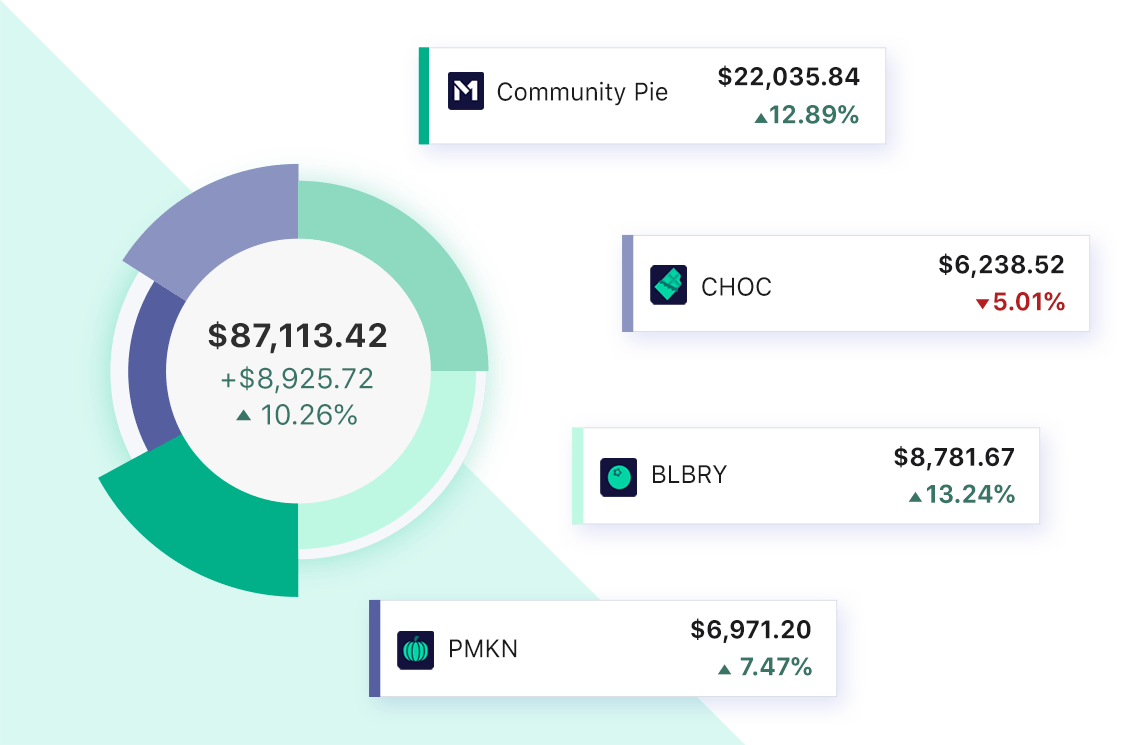Socially responsible investing: How to build a portfolio that matches your values

You may already have considered this problem: you want to invest in the stock market to grow your wealth, but you don’t want your money to support or enable evil corporations (whatever your definition of “evil” might be).
Well, here’s a possibility: socially responsible investing, also called SRI.
Over the past few years, socially responsible investing has become a popular strategy for investors who want to grow their wealth but don’t want their money supporting corporations that do not align with their values.
The beauty of socially responsible investing is that it’s not a one-size-fits-all strategy; you get to choose the beliefs or values you’d like to uphold. SRI isn’t just about feeling good — many investors develop unique SRI strategies that move them towards their financial goals.
Let’s look at the several types of socially responsible investments, the benefits and drawbacks of SRI, how it performs, and how to get started.
- What is socially responsible investing?
- Four types of socially responsible investing
- Why are some investors interested in socially responsible investing?
- How do socially responsible investments perform?
- How can you get started with socially responsible investing?
What is socially responsible investing?
Socially responsible investing (SRI) is an investing strategy based on both a company’s expected financial performance and its contributions to society.
In other words, a socially responsible investor’s goal is to invest in building their wealth in a way that considers the impact that companies have on the world and its people. This type of investing can be adapted to many different individual beliefs, values, and principles.

Four types of socially responsible investing: SRI, ESG, impact investing, faith investing
While choosing the specific stocks and ETFs is up to each investor, SRI is broken down into a few big picture categories:
1. SRI
Consider SRI the umbrella term for the category. Socially responsible investing refers to the overall strategy that factors in both the financial returns of an investment and its effect on the world. This effect is often measured by three metrics: environmental impact, social impact, and corporate governance. These three impacts are referred to as ESG.
2. ESG
ESG stands for three factors under socially responsible investing: environmental impact, social impact, and corporate governance. Sometimes used as a synonym for SRI, it is generally used to describe the specifics of elements of socially responsible investments.
3. Impact investing
Impact investing is another subset of SRI in which its primary goal is positive social impact. In this term, financial returns are only a secondary concern.
4. Faith investing
This subset of socially responsible investing focuses on building portfolios based upon the values of a particular religion. The origins of sustainable investing can even be traced back to faith investing. Religious groups like Muslims, Quakers, and Methodists used their ethics codes to guide their financial decisions and pave the way for more values-based, sustainable strategies.
Why are some investors interested in socially responsible investing?
Just like shopping at a farmer’s market or riding a bike makes you feel good through helping the world, socially responsible investing gives many investors the same feeling. In addition to feeling good, SRI can offer many other benefits:
- The ability to build wealth without compromising your morals.
- The ability to invest in companies whose work you believe is improving the world.
- The ability to contribute to causes you care about when you’re unable to sacrifice time to volunteer or money in the form of donations.
Like any investing strategy, of course, socially responsible investing also has potential drawbacks:
Profits are not always the top concern
This means you may earn less than you would if you invested without considering the social impact. Then again, no investment returns are ever guaranteed.
You’ll have to watch out for “greenwashing”
As SRI has grown in popularity, more companies have adopted the practice of “greenwashing,” which involves making themselves appear socially responsible (via specific marketing, donations, etc.) while still engaging in socially or environmentally harmful practices.
Corporate practices may change
Companies are not static. Just because you agree with a company’s business practices one year doesn’t mean you’ll agree with them the following year.
Of course, for the engaged investor, regularly researching the companies in your portfolio shouldn’t be a new concept or an added burden. Just know that when you engage in socially responsible investing, you’re adding an objective beyond earning money to your investment portfolio, which means you’ll have to track the performance of that additional objective.
How do socially responsible investments perform?
Truthfully, it depends — but a socially responsible investor looks for companies that positively impact the world and net positive returns. Studies have shown that SRI investments can have a positive performance for your investment portfolio.
- A 2020 study from asset-management firm Arabesque Partners found that 80% of their review studies show that sound sustainability practices positively influence the stock price performance of companies.
- Some SRI mutual funds can outperform traditional mutual funds
- Some SRI funds may be less volatile than traditional funds
How can you get started with socially responsible investing?
For what it’s Earth, socially responsible investing can be a great way to feel good about your investments. Here’s how you can get started:
1. Learn the basics
Check out FINRA’s guide to ESG investing for tips on what to look for in investments like ETFs. This guide also outlines some common traps to keep in mind and avoid while building an ESG portfolio.
2. Explore your options
Many helpful guides offer tips for choosing stocks and ETFs that align with your values and financial goals. Here are some to explore:
For social and environmental justice
Look at Green America’s Guide to Socially Responsible Investing and Better Banking. Among other resources, this series of articles offers tips for engaging in shareholder activism to spur change within companies and information on the divestment movement.
The USSIF also offers Investing to Curb Climate Change, which discusses where to put socially responsible investment funds and ways to encourage more climate-friendly practices at local businesses and in local government.
To support women’s rights
There are a few investment strategies that support women’s rights. If you’re interested, check out this article about gender lens investing, where you can learn about how some companies develop funds with women’s empowerment in mind (as well as some of their common pitfalls).
To align with your faith
Many religions offer guidelines for investing in a way that aligns with their ethos. Examples include the Dow Jones Islamic Market Index, Socially Responsible Investing Guidelines for Catholics, and the Unitarian Universalist Association’s Socially Responsible Investment Guidelines. If you follow a faith tradition and are interested in investing according to its principles, do a little Googling; you’ll probably come across helpful guidelines.
3. Consider an M1 Community Pie, Model Portfolio, (or build your own)
When it comes to socially responsible investing, it’s not just about the specific stocks and ETFs — the tools matter too. With M1, you can build a custom collection of sustainable or socially responsible investments without the manual calculations or fees (we call them Pies).
And if you’d rather choose from a pre-made SRI Pie, we have a few options.
You can find pre-made socially responsible investments in M1 Community Pies, like the Sustainability Community Pie, which consists of companies dedicated to environmental sustainability. Or our minority-led business Pies, which consist of publicly traded companies led by diverse groups of people.

You can also find pre-made socially responsible investments under the Research tab in the M1 platform (click Research > Model Portfolios > Responsible Investing). There are domestic and international options, so you can choose the Model Portfolio that best aligns with your strategy.
As always, consider your risk tolerance, long-term goals, and overall investment strategy before making any investment decisions.
With socially responsible investing, feel better about building wealth
Socially responsible investing is one investment strategy that can help you achieve your financial goals and leave the world a better place than you found it — according to your values.
Building wealth is a goal for all of us. Why not help the world along the way?
- Categories
- Investing
- Tags



